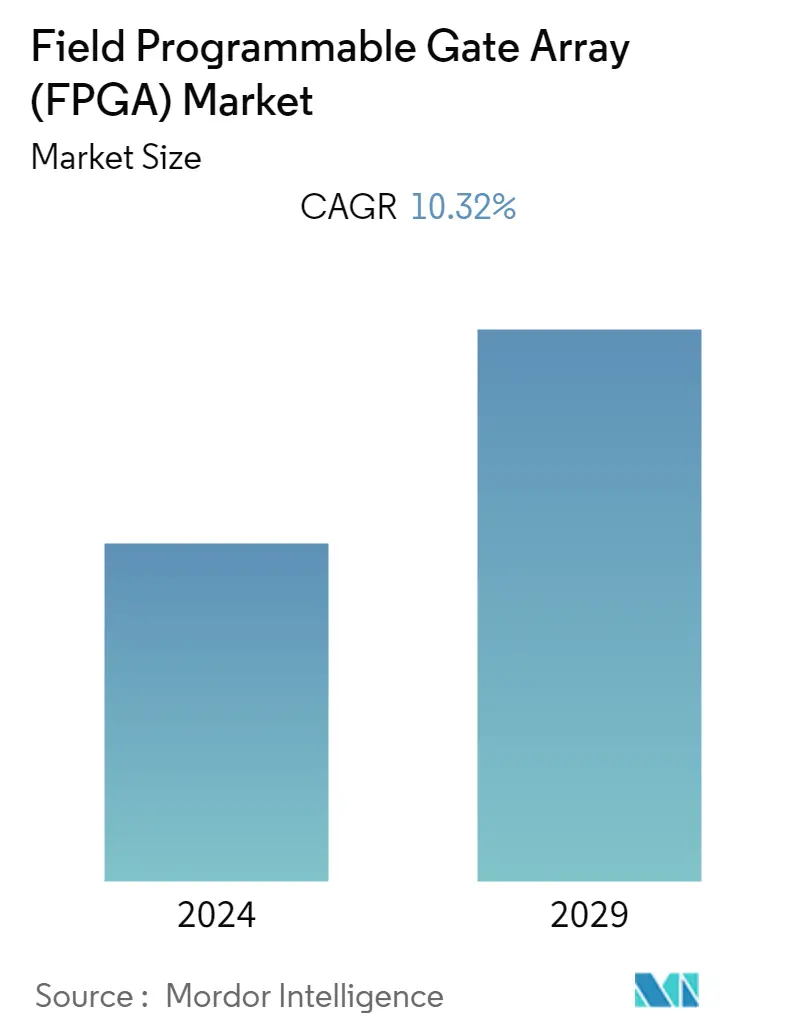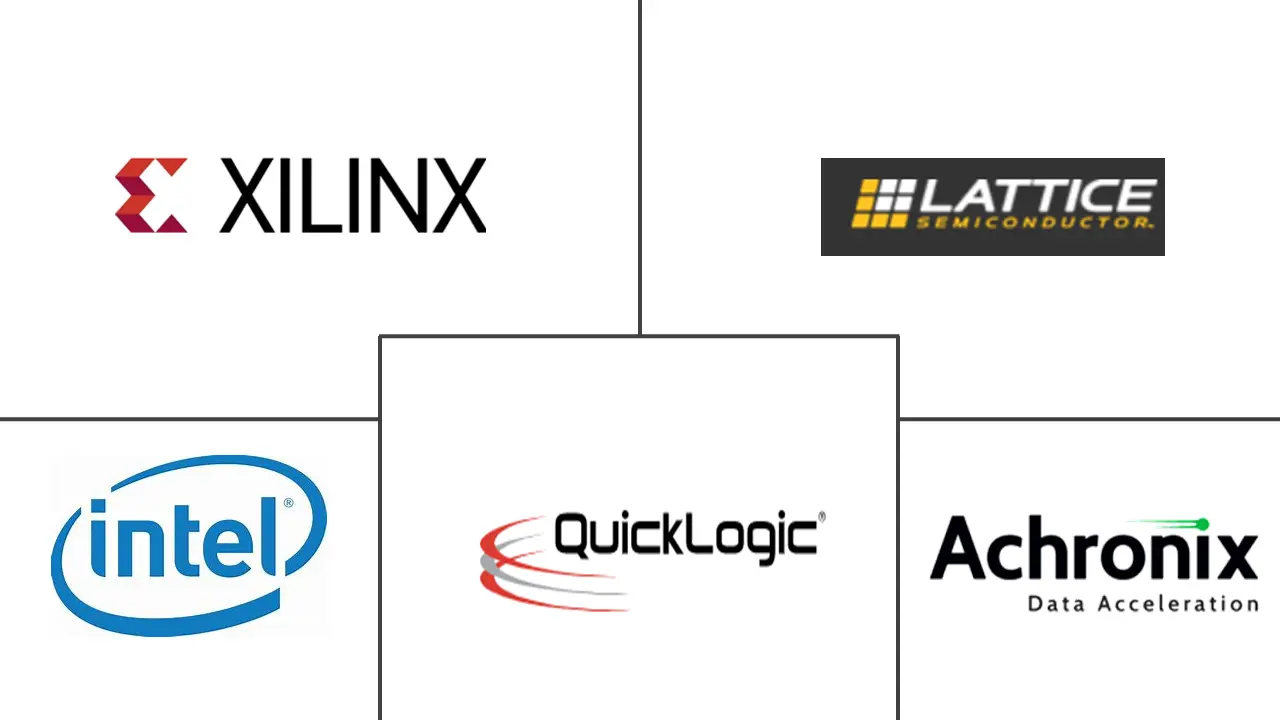Market Size of Field Programmable Gate Array (FPGA) Industry

| Study Period | 2019 - 2029 |
| Base Year For Estimation | 2023 |
| CAGR | 10.32 % |
| Fastest Growing Market | Asia Pacific |
| Largest Market | Asia Pacific |
| Market Concentration | Medium |
Major Players
*Disclaimer: Major Players sorted in no particular order |
Need a report that reflects how COVID-19 has impacted this market and its growth?
Field Programmable Gate Array (FPGA) Market Analysis
The Field Programmable Gate Array (FPGA) Market was valued at USD 6.9 billion in the previous year and is expected to grow at a CAGR of 10.32%, reaching USD 12.44 billion by the next five years. High deployment of data centers and high-performance computing is expected to propel the demand for the FPGA in the forecasted period. For instance, in March 2023, NTT intends to launch six data centers in India over the next three months, with three more in the works. Almost 70 percent of the identical capacity in these data centers has already been booked, according to NTT India MD Sharad Sanghi. The company will launch six additional data centers by the end of June, bringing its total number of operating data centers in the country to 11.
- Field programmable gate arrays (FPGAs) incorporate circuits with a programmable hardware fabric. Unlike ASICs or graphics processing units (GPUs), the circuitry inside an FPGA chip is not hard etched; it can be reprogrammed as required. This capability makes FPGAs a suitable alternative to ASICs, which need a long development time and a significant investment to design and fabricate.
- FPGAs are used in the technology industry for machine learning and deep learning. Microsoft Research displayed one of the first use cases of AI on FPGAs in the last decade as part of the company's efforts to speed up web searches. FPGAs provide a combination of programmability, speed, and flexibility, delivering performance without high cost and complexity to develop custom application-specific integrated circuits (ASICs). Microsoft's Bing search engine also uses FPGAs in production, indicating their value for deep learning applications. According to the company, Bing realized a 50% increase in throughput using FPGAs to accelerate search ranking.
- In addition, FPGAs deliver hardware customization with integrated AI and can be programmed to provide behavior like an ASIC or a GPU. The reconfigurable, reprogrammable nature of an FPGA makes itself well suited for a rapidly evolving AI landscape, enabling designers to test algorithms quickly and get to market fast. High Power Consumption Compared to ASIC restraining the market growth. Energy efficiency has always been a significant concern across various industries. Industries incorporating electronic devices always seek low-power-consuming devices. In FPGAs, power consumption is higher, and programmers do not have any control over power optimization.
- Furthermore, growth and advancement in technology development for 5G networking infrastructure and an increase in the use of FPGA in various end-user industries are some of the factors driving the studied market growth. For instance, in June 2022, Ericsson invested over USD 100 million in its energy-efficient 5G smart factory in Texas, where the equipment powering 5G networks across the United States is constructed. The factory showcases innovation powered by 5G connectivity, with abilities such as autonomous robots, augmented reality training, and many more.
- In addition, various players in the market are continuously investing in the latest technology to develop innovative products. For instance, in January 2023, FPGA startup Rapid Silicon landed USD 15 million to bring its first chip to market. The round of funding will be used to invest in Rapid Silicon's product portfolio, support its premier low-end FPGA product launch, and build on the company's momentum in adopting open-source software for commercial applications.
- The demand for data centers, artificial intelligence, and machine learning across government, enterprises, and academic entities is witnessing exponential growth due to the COVID-19 pandemic. This growth has positively impacted the need for FPGAs. It is predicted to maintain the same pace in the forecasted period, helping spread the impact and significance of FPGAs in various end-user industries.
